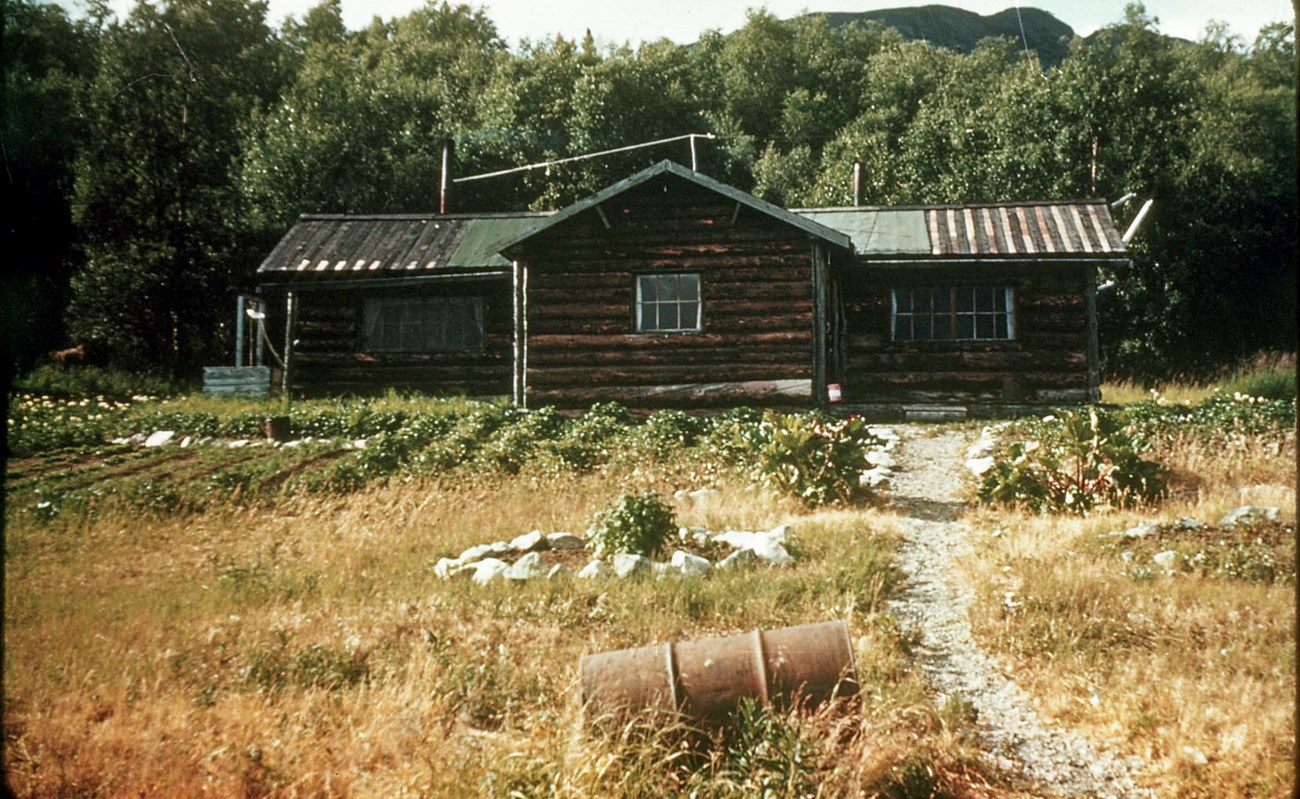Last updated: October 26, 2021
Article
Kennedy-Rasmussen Site

Photo courtesy of John and Esther Alsworth
One Place, Many Connections
The Kennedy-Rasmussen Site is located on the northern edge of Lake Clark near the village of Port Alsworth. As a place managed by the National Park Service, this site provides insight into the history of air transportation in the Lake Clark region and the early pilots who made this isolated location more accessible to local residents and visitors.Drawn to the region’s fishing, fur harvesting and gold prospecting opportunities, Norwegian settler Thomas Rasmussen (1874-1917) built a cabin and established a homestead on the site sometime between 1906 and 1911. He owned the property until his death in 1917.
In the 1920s, an increase in hunting and fishing tourism created a greater demand for commercial pilots to access this remote area, which lacked roads. Commercial pilots transported food, supplies and flew visitors to the region. The site served as a home again when James Oran “Jim” Kennedy and his wife Glenna moved to the area in 1935. Kennedy, previously a fisherman at Bristol Bay, became the first resident pilot at Lake Clark and is credited with providing the first air taxi service for locals in the region. The Kennedys based their operations on the site, where they established gardens as well as built a cabin and outbuildings. The location of the settlement on the lake, however, was not ideal due to strong prevailing winds which made landing a plane difficult. After battling the winds and waves of Lake Clark for six years, the Kennedys sold the property to Leon “Babe” and Mary Alsworth in 1942.

Photo courtesy of Allen Woodward
In 2012, the National Park Service acquired the site to be preserved for all families who hold a connection to the property and be available for the public to enjoy. Some evidence of the site’s landscape features such as pathways, culturally-modified trees and fences are present, but most are overgrown. Very little is left of Rasmussen’s era, though there is evidence of his cabin’s foundation footprint. Though in various states of decay, portions of the Kennedy cabin, cache and other outbuildings still exist on site. In 2018, the cache built by Jim Kennedy and Anton Balluta in 1935 was stabilized and placed on new piers supported by concrete footings. The buildings and structures that remain reflect the styles of these early homesteaders and their resourcefulness in building shelter and storage for supplies in this remote environment.

NPS Photo
